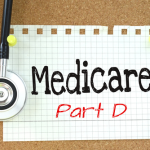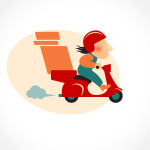Ankylosing Spondylitis—Symptoms and Causes
Ankylosing spondylitis is an inflammatory condition and a form of arthritis that primarily affects a person’s spine, lower back, and sacroiliac joints.
The condition causes chronic joint pain, stiffness, and a loss of mobility in the spine and lower back. In advanced cases, the disorder can also lead to bone deformity.
Prescription drug assistance and physical therapy can play a massive role in alleviating the symptoms of the condition.
In this blog post, we’re discussing ankylosing spondylitis as well as its causes and symptoms.
What Is Ankylosing Spondylitis?
Also known as Bechterew’s disease, ankylosing spondylitis is a subtype of arthritis that largely affects the lower half of the spine and the sacroiliac joints. These are the joints responsible for connecting the spine to the hips.
The condition causes inflammation in the spinal joints. This means that it also inflames the ligaments, the tendons, and the entheses located there. In severe cases of the condition, inflammation can cause bone deformation. As a result, it can lead to bone fusion, immobility, as well as possible spinal deformity.
There’s currently no cure for ankylosing spondylitis. However, prescription drugs and other treatments can help affected individuals manage pain and inflammation in the joints.
Symptoms of Ankylosing Spondylitis
Symptoms of the condition usually first appear between the ages of 17 to 45 years. The symptoms are likely to vary from individual to individual. However, like other types of arthritis, it typically starts as mild to moderate flare-ups with nearly no other symptoms.
Over time, these symptoms spread to other areas of the spine and impact the joints of the spine and neck.
It’s vital that you know the symptoms and early warning signs of the condition to manage them effectively.
Some of the symptoms include:
- Back pain in the morning (this is the most common symptom of the condition)
- Anemia
- Fatigue
- Loss of appetite
- Low fever
- Pain in shoulders and hips
- Pain and stiffness during the night.
- Poor posture with stooped shoulders
- Reduced lung function
- Unexplained weight loss
Since AS involves inflammation, it can also spread to other parts of the body. These usually include the areas surrounding the joints.
Causes of Ankylosing Spondylitis
Family History
The exact causes of ankylosing spondylitis are still unclear. However, the disorder is known to run in families. If someone’s parents or siblings have the condition, their risk of developing the condition also increases.
Genetics
Genetics might play a role in developing ankylosing spondylitis. The presence of HLA-B27 protein can increase your risk of developing the condition. In fact, more than 90% of people with AS have genes that produce this protein.

Affording medicines for rare diseases can be difficult. This can turn many people away from getting the help they need. If it’s the same case with you, we can assist you.
If you need financial assistance for prescriptions, try our prescription assistance programs today. At Advocate My Meds, we take pride in being a full-service prescription assistance organization making brand-name drugs affordable. You can enroll in our programs today to get access to over 1,500 FDA-approved drugs.
Contact us now to learn more.







